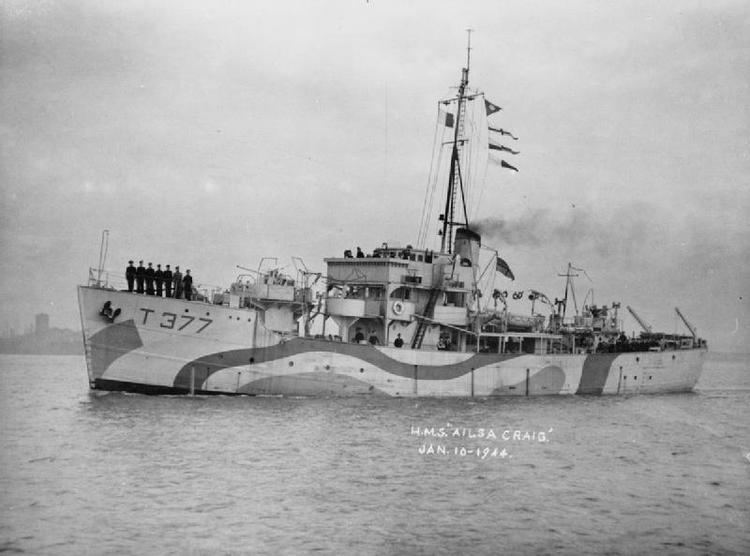Built 1939–1945 | Lost 23 | |
 | ||
Completed | ||
The Isles-class trawlers were a class of naval trawler used by the Royal Navy, Royal Canadian Navy and Royal New Zealand Navy during World War II.
Contents
The type comprised 197 vessels built between 1939 and 1945 in the nearly identical Isles, Dance, Tree and Shakespearian classes. Generally similar to the Castle class naval trawlers of 1916-18, though somewhat larger, they were mainly used on minesweeping and harbour defence duties. Most were armed with one 12-pounder gun (76mm) and three or four 20 mm Oerlikon AA guns with 30 depth charges. In the Dance class a 4-inch AA gun (102 mm) was fitted in place of the 12-pdr, and there were six 20 mm Oerlikons in Annet, Bressay, Damsay, Fiaray, Foulness and Lindisfarne. Four of the trawlers were given 'Bird' names when converted to controlled minelayers in 1943-44: Blackbird (M15), Dabchick (M22), Stonechat (M25) and Whitethroat (M03). A total of 23 of these trawlers were lost during the war. Six trawlers were loaned to Canada in 1942-45 and five to Norway in 1943-45.
Postwar, 17 of the trawlers were disarmed as wreck disposal vessels: Bardsey (DV13), Bern (DV4), Caldy (DV5) Coll (DV6), Earraid (DV7), Fetlar (DV8), Flatholm (DV9), Graemsay (DV10), Lindisfarne (DV11), Lundy (DV12), Neave (DV14), Scalpay (DV15), Skomer (DV16), Steepholm (DV17), Switha (DV18), Tiree (DV19), and Trondra (DV20). At least five were employed as danlayers (laying and retrieving dan buoys during minesweeping operations): Imersay (J422), Sandray (J424), Shillay (J426), Sursay (J427) and Tocogay (J451). After decommissioning, Switha and Coll were converted to oil tank cleaning vessels for dockyard service in 1949-50.
By 1949 there remained in service of this type 31 trawlers and four controlled minelayers in the Royal Navy, one controlled minelayer in the Royal Canadian Navy, and four trawlers in the Royal New Zealand Navy. An additional 16 were in service in the Italian Navy and six in the Portuguese Navy. Most of the surviving Royal Navy examples were discarded in the 1950s, but a few remained until the 1960s. Two acquired postwar by the Federal German Navy remained in service as training vessels well into the 1970s, with one, Trave (ex-Dochet), resold to Turkey for further service in 1977.
